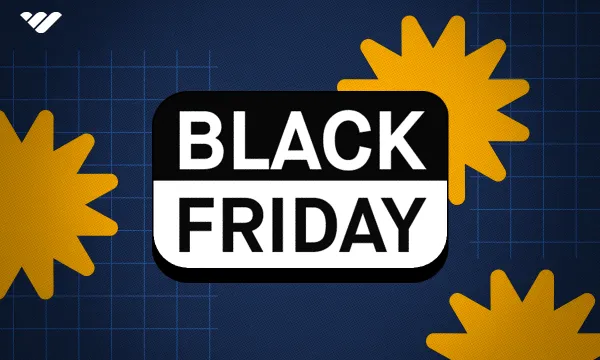Signing up for the entrepreneurial journey is a daunting task, and a lot of founders are left in the dark when it comes to data and strategies that help them succeed and stand out from the pack. Today we at Whop would like to remind founders of a simple yet effective approach to building an attractive business through the Lean Startup methodology and using an MVP.
The term Minimum Viable Product (MVP) has caused a lot of confusion and misconception in the business world. Some people believe it’s an excuse to develop poor-quality products and services, while other people believe they will never be able to appeal to their target buyers with an MVP.
To help you better understand what an MVP is, how to approach its design, and where to go from its initial release, we will review all the important factors to help you rethink your business approach.
Let’s start with the basics.
Minimum Viable Product Defined
A minimum viable product (MVP) is a business term used to describe a product or service that contains enough features to make it interesting for a large enough pool of potential customers to start using. It is a philosophy from the Lean Startup methodology, which is perhaps described best in the book The Lean Startup by Eric Reis.
You can apply the concept to both physical and digital products in many different industries, from technology gadgets to cloud services and even mobile apps and games.
The basic idea is to develop a version of a product or service you have in mind and test the main concepts with customers before you commit to developing all of your product ideas.
From a product development and marketing perspective, it allows for a more carefully planned approach to creating products that better satisfy customer needs. By analyzing user feedback and usage data, you gain direct insights into what features and areas achieve the most attention, allowing you to gain greater value from your development budget. Many well-known businesses use the MVP approach to lay the groundwork for their long-term success.
Examples of MVPs in Well-Known Companies
One of our favorite examples of an MVP is Zappos. At the dawn of ecommerce in 1999, Nick Swinmurn wondered whether people would be interested in buying shoes online without first trying them on.
Not waiting to launch a perfectly designed site before taking it live, Swinmurn, in true MVP fashion, created a simple website called shoesite.com and posted photos of shoes with different sizes and prices. From that version that was simply good enough to work and gain customers, the site evolved with better features and a cleaner look and rebranded under the name Zappos, which eventually sold to Amazon for $1.2 billion.
Airbnb is another great example of two founders with a simple idea who tested small to see whether it was worth pursuing.
College graduates Brian Chesky and Joe Gebbia needed to raise cash for their living expenses in San Francisco. A conference was happening for which they knew there would be demand for short-term housing, so they knew it was the perfect time to test their idea of running a bed and breakfast out of their apartment. When the weekend of the conference rolled around, they created a bare-bones website advertising an airbed in a room in their apartment and set up some search engine ads. Within days, they had offers and were on their way to creating a new rental market.
Finally, there’s the largest company in the world which used the MVP model to start its now trillion-dollar empire. Apple created the original iPod in 2001, long before the iPod touch. Those products hit the market long before the iPhone came out in 2007. Steve Jobs envisioned the iPhone long before that, but it can be argued that his approach was to create a series of MVPs that ultimately led to what millions of people have in their pockets today.
Building Your Own MVP
Going back to the book by Reis for advice, let’s dive into one of its most important takeaways –Validated Learning– and how you can apply it to drastically improve the outcome of your startup’s trajectory.
Validated learning follows three simple steps:
Build. Measure. Learn.
Too often, entrepreneurs get caught up in the trap of thinking that success is made by creating a perfect product first, and then hoping it sells. The Lean Startup turns that idea on its head by saying that you shouldn’t stress the product’s perfection too much, as it can change over time. You simply need to get your product to a working level. The book provides a roadmap for MVP progression that the majority of entrepreneurs simply don’t follow, which can be seen in the image below:

This image above describes validating learning, perhaps the biggest component of making an MVP, which is about building a functional product as early as possible so that one can measure and learn and thus iterate faster than the competition who might be stuck on perfecting the wheel of their car before it’s built –without testing whether or not they should be building a car in the first place.
Validated learning means that instead of going through the lengthy process of developing a perfect product and then launching it, you talk to customers, get feedback, and adjust your product based on that feedback. For example, if you want to launch an SEO-related keyword software, instead of trying to add new features or a slick interface before showing it to your audience, simply release the most basic functional version, gather live customer feedback, and iterate from there.
Starting and Accelerating a Positive Feedback Loop for Your MVP

Another perk of using Validated Learning in your MVP process is speed. By following Build, Measure, Learn, you’ll be able to “move fast and break things” in the best way possible.
Speed is incredibly important to both investors and customers and can be a make or break in securing initial or continued investment – if you show that you can work and iterate quickly based on feedback, your audience will know they’re getting an efficient return on the money that they give to you.
Keeping Validated Learning and using Build->Measure->Learn as your framework is perhaps one of the best practical takeaways that The Lean Startup provides.
If you haven’t read the book yet, we highly suggest you grab a copy to share with your team.
6-Step Process for Launching an MVP
The final step after having chosen an MVP would be to launch it. Let’s go over a basic six-step process that you can follow and apply to your company’s MVP launch.
Step 1: Perform Initial Market Analysis
The first thing you must understand is the current place in your target market. The best way to do this is through a SWOT analysis, which stands for strengths, weaknesses, opportunities, and threats.
This can be done even if you’re in the early stages of a start-up with no tangible products or customers, and it will give you a good idea of what your first MVP will look like.
Step 2: Decide on Your Business Model
After going through a SWOT analysis, you will have influenced your prospective business model. The purpose of your business model is to define business strategies and activities that will lead to a product or service.
This is a step that you need to take seriously as it can make or break your business. Once you pick your business model, which can vary from B2B or D2C and can include recurring revenue or one-time purchase models, you will set the stage for how a business will create value for customers, which will heavily impact your design for an MVP.
Step 3: Create and Implement a Business Plan
Building on the foundation of your business model, you will need to create a solid business plan to execute the model. This plan will include more details about your strategic approach to creating value, what your product or service will look like, and how you plan to reach your target market.
You can refer to various resources for a business plan template that you can fill out and use to execute your business. Consider your current team, whether you’re a solopreneur, have a cofounder, or a few initial employees, and how they fit into carrying out your business plan. The business plan will start with an MVP, which by now you should ideally have picked and have a checklist for the criteria of when it is considered ready.
Step 4: Implement a Marketing Strategy
If you build it, they won’t just come out of nowhere. You need to be strategic about how you market your company. A good way to approach this is by analyzing the three P’s of marketing:
- Product: You have already defined and developed your MVP, but it’s now time to clearly define what it is in order to explain it to customers.
- Price: Many businesses decide to market their MVPs for free, but this is also an opportunity to start testing different price ranges. You can utilize split testing with live pricing in addition to feedback from free beta users.
- Promotion: This part of marketing is all about planning how you will get your MVP in front of users through various forms of digital and print advertising.
Once you have all these planning steps done, it’s time to execute your business plan and get your MVP out to the world.
Step 5: Launch your MVP
Now that you’ve laid a foundation with an initial market analysis, a business model and plan, and initial marketing, you need to pick a date and execute the most important step, i.e. actually launching your product.
Don’t think too hard about whether or not your product is ready enough–the pure MVP mentality is scrappy and lean, so again, you should simply have your product at a good-enough functioning level. If the launch goes poorly or you receive bad feedback, you can simply go at it again, but you’ll never know what the world actually thinks of your product if you never go live. If you’ve done good enough marketing, you will have built a platform to launch to, normally via email. Making sure your email list is at a sufficient level, for example, 250 recipients, will allow you to ensure a large enough sample size for your MVP launch.
Step 6: Gather feedback and iterate accordingly
The whole point of your launch will be to gather feedback so you can see how far off your MVP is from the ideal version, not necessarily according to an idea you have in your head, but more so how the customer sees it in theirs.
Listen to all constructively critical feedback, and make it easy for your newest customers to give feedback in the form of surveys or an email reply to an order.
Be sure to reward early customers who provide solid feedback as they are basically an extension of your initial team and are critical to shaping your company and its vision. Remember that without your customers, your company would be nothing! Make changes based on feedback, and most importantly, relaunch your MVP as fast as possible and get feedback again until you reach a point of function that both you and the majority of your customers are happy with.
Setting Your MVP Up for Success
“Startup success can be engineered by following the process, which means it can be learned, which means it can be taught.” - Eric Reis
With a growth mindset and the right education, you should be able to succeed in your startup goals, whether you want to launch a boutique SaaS company or a laser-focused community.
To recap, the main idea behind developing and marketing an MVP is to have a version of the product that will allow your customers to guide you in the right direction for what features matter the most. Using this highly effective way to get constructive feedback in product development at the earliest possible stage is a critical ingredient to the success of your MVP and subsequent business growth.
Here’s a quick summary of key takeaways from this guide that will help to set your MVP up for success:
- An MVP isn’t meant to be perfect, but it should be good enough to use
- Build first, then measure with user feedback, and implement what you have learned into positive and functional product changes
- Launching is the most important part as it will allow you to get real-world feedback, which is more valuable than anything theoretical, so don’t overthink whether or not your product is ready or not
- Make it easy for users to give feedback, and do whatever you can to reward early users who do so as this is the most important part of using an MVP to establish your business
Launching your MVP with Whop
Being able to reach an audience that already has a certain degree of trust is one of the biggest advantages that you can have in a product launch, and this is what Whop provides.
👉 From private Discord communities to SaaS, online courses, and everything in between, Whop is quickly becoming the top marketplace for all things digital. It takes less than 10 minutes to sign up as a seller, and after doing so, you’ll reach one of the fastest-growing digital product platforms and a large potential customer base. Sign up and start selling your product with Whop here today.
FAQs
Is there a difference between an MVP and a prototype?
Yes, the main difference between an MVP and a prototype is the extent of their features. A prototype will test a basic functional concept, while an MVP will include multiple features based on already proven concepts.
Businesses tend to develop prototypes for internal testing purposes to ensure that ideas will work before investing too much in the concept.
What do you do after launching an MVP?
Arguably, the time after launching an MVP is most important. This is where you need to gather input from your chosen user group through surveys, direct feedback, and usage data analysis. This critical information will tell you which features of your MVP are the most successful, and which are missing.
Once you have this information, it’s time to improve your MVP or even pivot in a different direction.
How long should you monitor an MVP after launch?
The simple answer is that you should monitor your MVP for as long as it takes to go through enough iteration cycles to release your golden master product. Once you feel confident that your product or service has received enough productive feedback, you can decide to release a full product version to the wider public. This will allow you to develop feature improvements through the MVP process.





